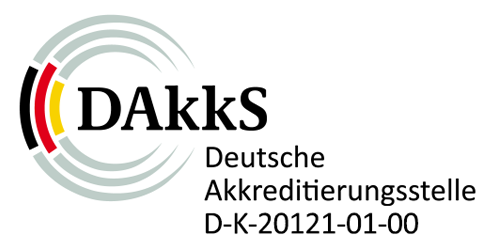Calibration of Analog or digital force gauge (DKD-R 3-3 (D)) CAL-230
Verification and calibration of force measurement systems (force gauge, load cell with amplifier and indicator) traceable to PTB/DKD/ILAC standards.
The directive DKD-R 3-3 describes calibration procedures for force measuring systems.
The reduced scope according procedure "D" calibrates the object in one position with two iincreasing measuring rows and force levels at 5 points. This procedure can apply if "a-priori" knowledge for the and hysteresis and repeatability is available to calculate the uncertainty accordingly. The accuracy is stated in the protocol.
The calibration for tensile and compression force (pull and push direction) is performed on an automated calibration stand with direct staggered mass application for forces up to 1000N.
The lowest resolution is 0,2N for force gauges with 2N measuring range. Force gauges with nominal measuring range higher 1kN are calibrated on a stand with transfer standards up to 250 kN.
Please consult the below table in order to check which measuring ranges of the calibration stands are covered by the accreditation in relation to the nominal force range of your gauge.
- Traceability according to requirements of ISO 9001:2015 and ISO/TS 16949:2016
- Calibration laboratory accredited according ISO 17025 with measuring range from 5N to 250kN
- Highest precision, low uncertainty (CMC better 0,1%)
Our calibration laboratory is accredited to perform DAkkS-compliant calibrations, according to DIN EN ISO/IEC 17025.
What is a DAkkS-compliant calibration?
DAkkS-compliant calibrations are, according to the national standards of NMIs (national metrology institutes), the highest level of standard in the calibration chain.


